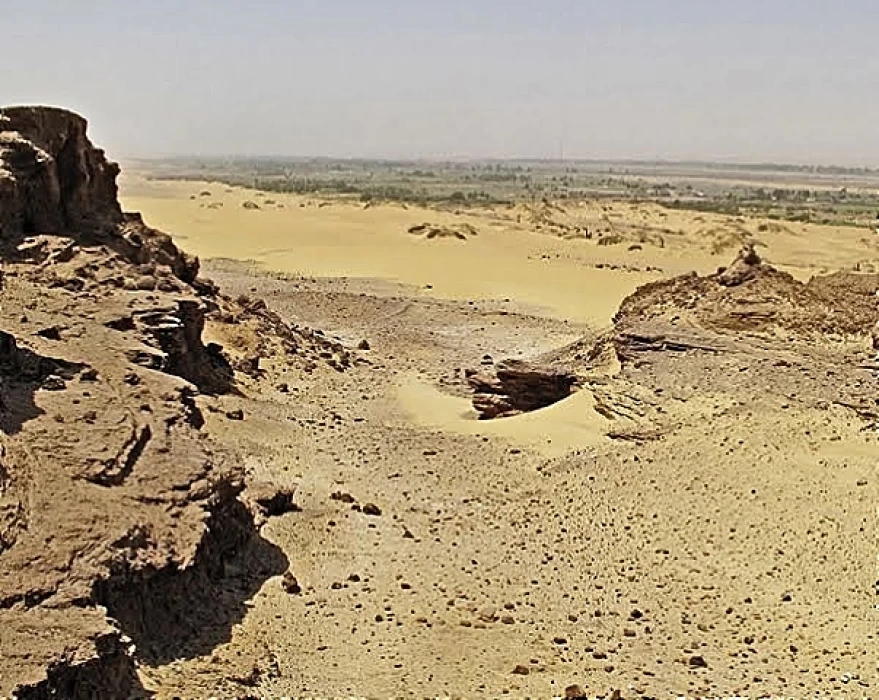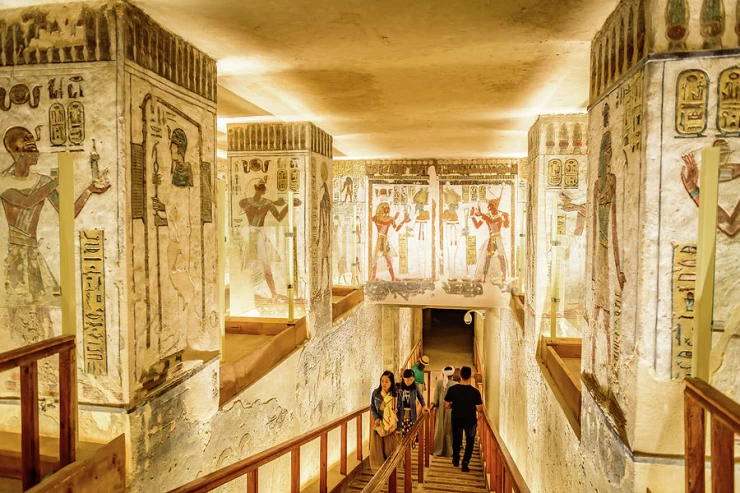
The desert route of Darbel Arbain
The desert route of Darbel Arbain
The “Arbaeen Trail” is a road known since ancient times as the Western Mountain, as caravans used to travel the distance from Sudan south to the Nile Valley through Assiut in about forty nights. This trail was a vital artery for land trade between Egyptian countries on the one hand, and between Sudan and northern Maghreb countries on the other hand, in addition to the passage of pilgrimage caravans, which made Assiut acquire an important strategic location and became the commercial capital of Upper Egypt.
Assiut's western mountain, the Western Plateau, includes the most important ancient caravan routes linking Egypt with Sudan (Darfur and Kordofan) via the Arbaeen Trail, and this road had a great impact on Assiut's history and its importance in terms of trade and industry, and in the Pharaonic, Greek and Roman eras due to its association with this road.
The road gained its importance in ancient Egypt due to its intermediate location between the regions of Pharaonic Egypt and being a major center for commercial caravans heading to the oases in the Western Desert, and the beginning was from Darb al-Arbaeen, which connects Darfur to Sudan, where it is located at the head of the caravans that connect the Nile Valley with the oasis of Kharga and Darfur in western Sudan, which is considered the trade route between the two parts of the Nile Valley and the continent of Africa.
The road includes in a large part of it within the Egyptian borders currently the distance between Assiut and the city of Kharga, and from there it heads south, passing through the town of Paris and Jebel Sharsher to Bir Karim, this distance amounts to about 380 kilometers, and a large number of drinking water wells are located on this road, the most famous of which are Bir Murr, Abu Al-Hussein and Kseiba well.
The caravans coming from Darfur, Kordofan, the Takrour countries and Morocco also used this route, whether on their trade trips or on the annual pilgrimage, landing several times during their travels near water sources to take a rest, and their most important stops on this arduous journey were the village of Kharga, specifically on the height of Jebel al-Tair “Al-Bajwat” and after the commercial caravans from it had paid the estimated fees to the oasis scout in the village of Paris, if the caravan was not allowed to continue its journey north towards Cairo until it had paid its fees in full.
A commercial caravan from Morocco used to arrive in Egypt every year in addition to the two caravans from Sudan, the “Sennar” caravan, which used to reach Upper Upper Upper Egypt via Wadi Halfa and Aswan, and the Darfur caravan, which reaches Central Upper Egypt via the Darb al-Arbaeen road to Kharga and from there to Assiut, and Escafrack, a French traveler, followed the trade on this route However, this trade declined immediately after the years of the British occupation of Egypt and England's attempts to interfere in Sudan's affairs and distance it commercially and politically from Egypt, and to tighten control over the Egyptian borders in order to isolate the Mahdist dervishes in Sudan and eliminate the Mahdist revolution.















